This Week At Angama #43
30 November 2018 | This Week at Angama | Adam Bannister
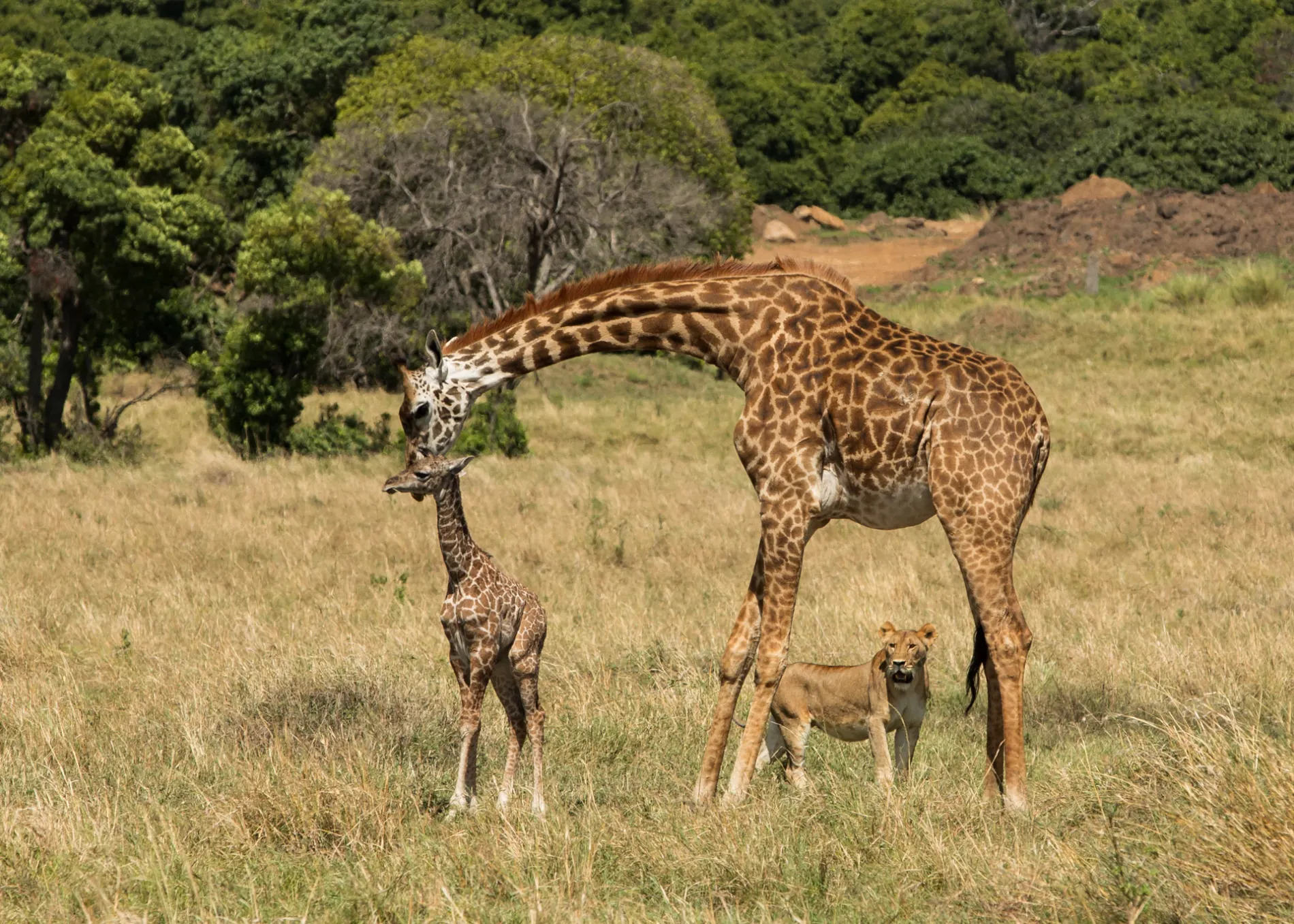
We all know that the Mara is a mecca for big cats, and in particular lions, but in the course of the year I cannot recall as many males being seen; and not just being seen scattered around the Triangle, but all in relatively close proximity. There is no doubt that conflict is on the horizon.
But before we dive into the complicated male lion dynamics we start This Week At Angama with one of my most remarkable sightings to date.

In the early hours of Wednesday morning a heavily pregnant giraffe gave birth. With a few hours until the sun rose she must have dreaded the darkness and the shadows that lurked amongst the trees. [f 4.0, 1/640, ISO 320, +0.67]
Our first Angama safari vehicle arrived on the scene at first light only to find that their arrival coincided with that of two lionesses. With the newborn baby still hobbling on it’s legs sparks were about to fly. Courageously the mother giraffe stood her ground as the two lions circled. She kicked and stomped and nestled her baby against her chest. At one stage the lions managed to leap on top of the baby sinking their teeth into the top of her neck. The mother came racing in and chased them off.
 [Photography by Margot Raggett – 1/500 at f/11, ISO 500]
[Photography by Margot Raggett – 1/500 at f/11, ISO 500]
On another occasion the lions cleverly circled around and ambushed the baby. Again, the mother came in kicking. Devastatingly she struck her own baby sending it flying. She crashed to the ground and lay motionless. Had the mother just killed her own baby by mistake? Fortunately, the baby stirred and miraculously stood up. Had the tables turned? A few hours ago this baby had still been in the womb.
It was at this time that I arrived at the sighting. The mother and her calf were being slowly but methodically pushed away from the thickets and into the open. It became obvious that this was going to be a protracted engagement. The lions were going to try and tire out the mother and calf. The ordeal had already been going on for nearly 3 hours and the temperature was rising. Exhaustion was surely to set in. Had the baby even been able to nurse?
 [f 8.0, 1/400, ISO 160, +0.33]
[f 8.0, 1/400, ISO 160, +0.33]
 [f 8.0, 1/400, ISO 160, +0.33]
[f 8.0, 1/400, ISO 160, +0.33]
 [f 8.0, 1/500, ISO 160]
[f 8.0, 1/500, ISO 160]

What made the event all the more surreal was that it was all taking place directly beneath Angama: our lodge perched on the edge of the escarpment. [f 8.0, 1/640, ISO 160]
I am relieved to say that after a 4 hour struggle the lions started to overheat. They needed to rest in the shade. It was at this time that more giraffe had descended the escarpment coming closer to have a look at what was happening. The mother grabbed this opportunity and moved away. Her unwavering bravery had allowed her calf to see out its first day in the African bush.
 [f 6.3, 1/800, ISO 250, +1]
[f 6.3, 1/800, ISO 250, +1]
The rest of the week has largely been dominated by male lions. I managed to see 10 individuals in just a few days, and I can assure you even more were viewed by others.

We start off with the introduction of two young and very good-looking boys. I am not sure where they have come from, but rumours on the bush telegraph suggest they may have come from the northern conservancies of the Mara. [f 5.0, 1/640, ISO 640]

One of these two males is destined to be very large, however, this coalition of two is currently hanging out in the core of the Musketeer territory. Scar and his brothers will not be impressed… [f 4.0, 1/400, ISO 320, -0.33]

The other male in the coalition appears a little younger, but ever so handsome. [f 5.0, 1/640, ISO 800, +0.33]
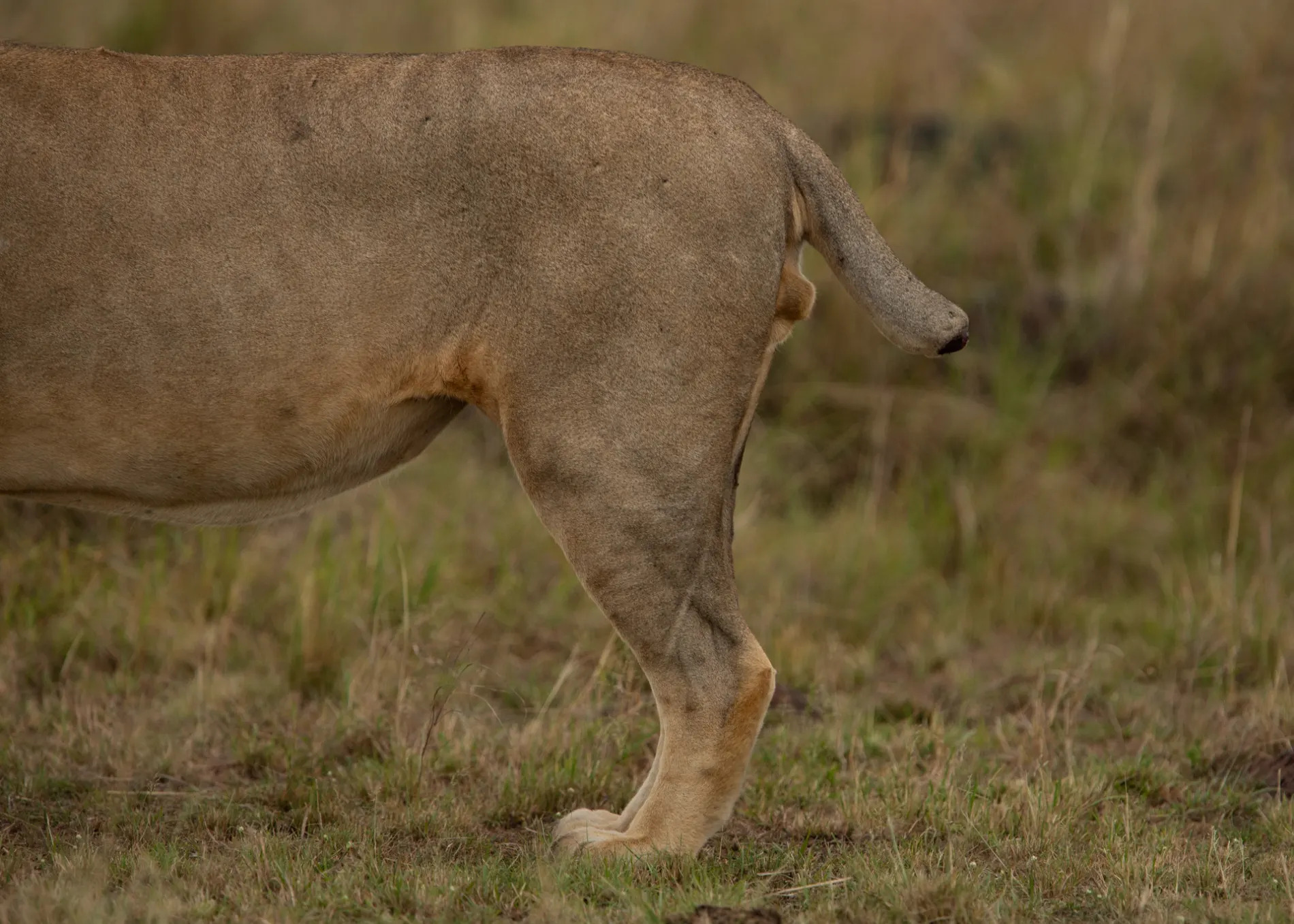
But when he turns side on, you notice half of his tail is missing. Oh how I wish I knew the story as to how he lost his tail. Another fighter, another example of bravery in the Maasai Mara. [f 4.0, 1/500, ISO 320, -0.33]
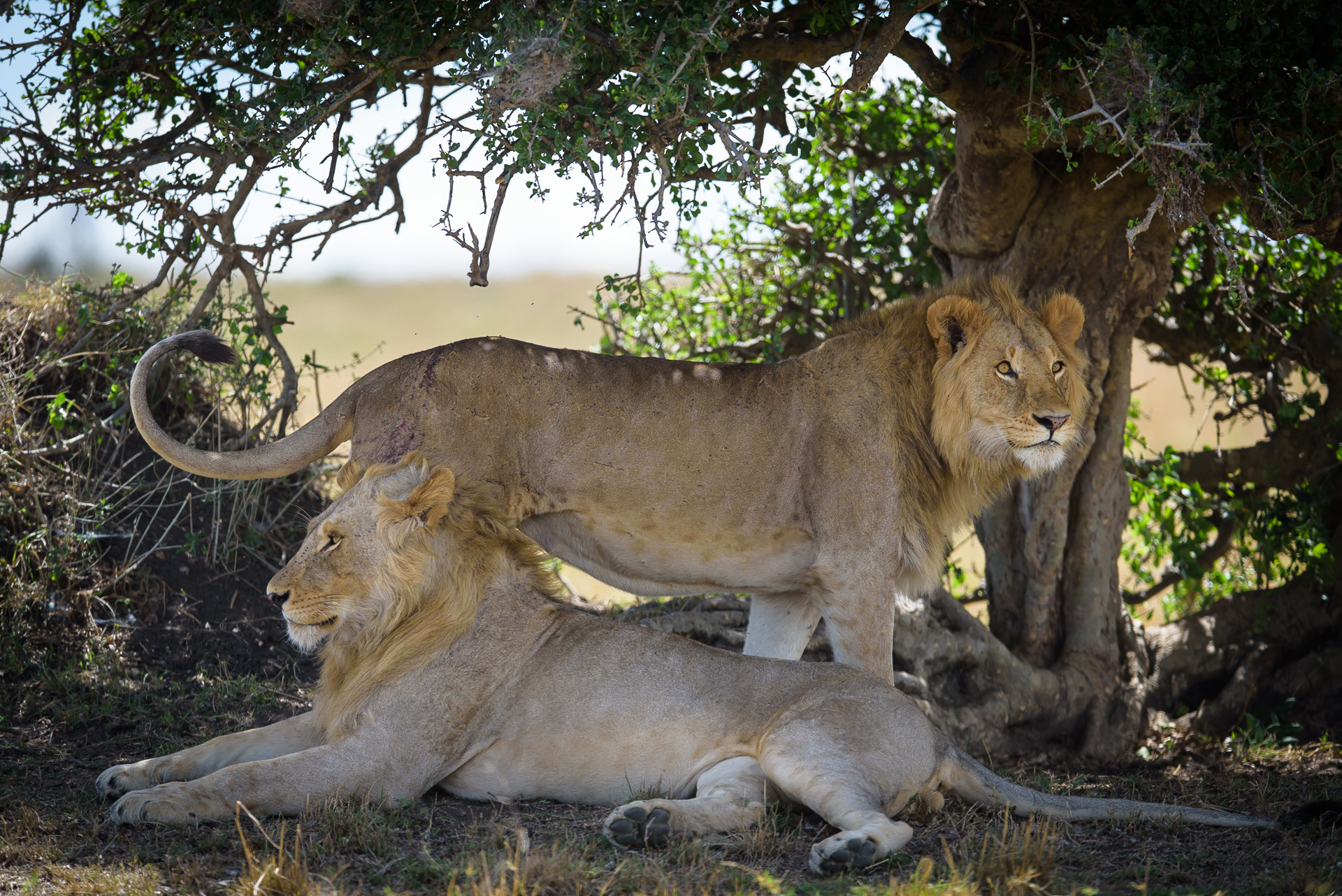
It is not just these two males risking their lives living in the territory of the Mara’s most notorious coalition. Here you can see two of the three nomadic males that of late have started showing real signs of taking over the area around Topi Plains. [Photography by Margot Raggett – 1/500 @ f/3.2 ISO 80]
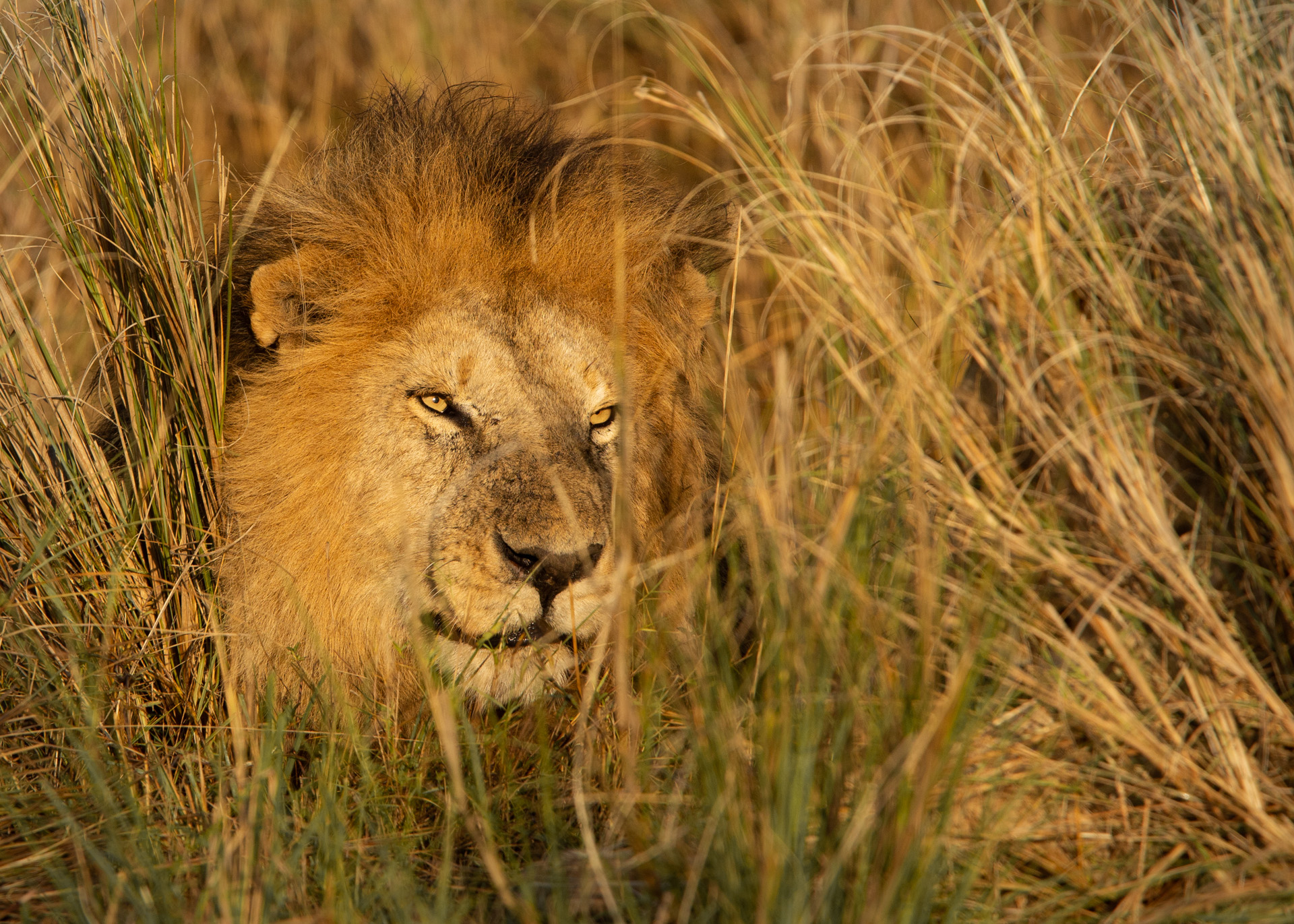
Meanwhile barely a few hundred yards away we find a member of Scar’s coalition. Six male lions within a kilometre of each other. [f 6.3, 1/1250, ISO 400]
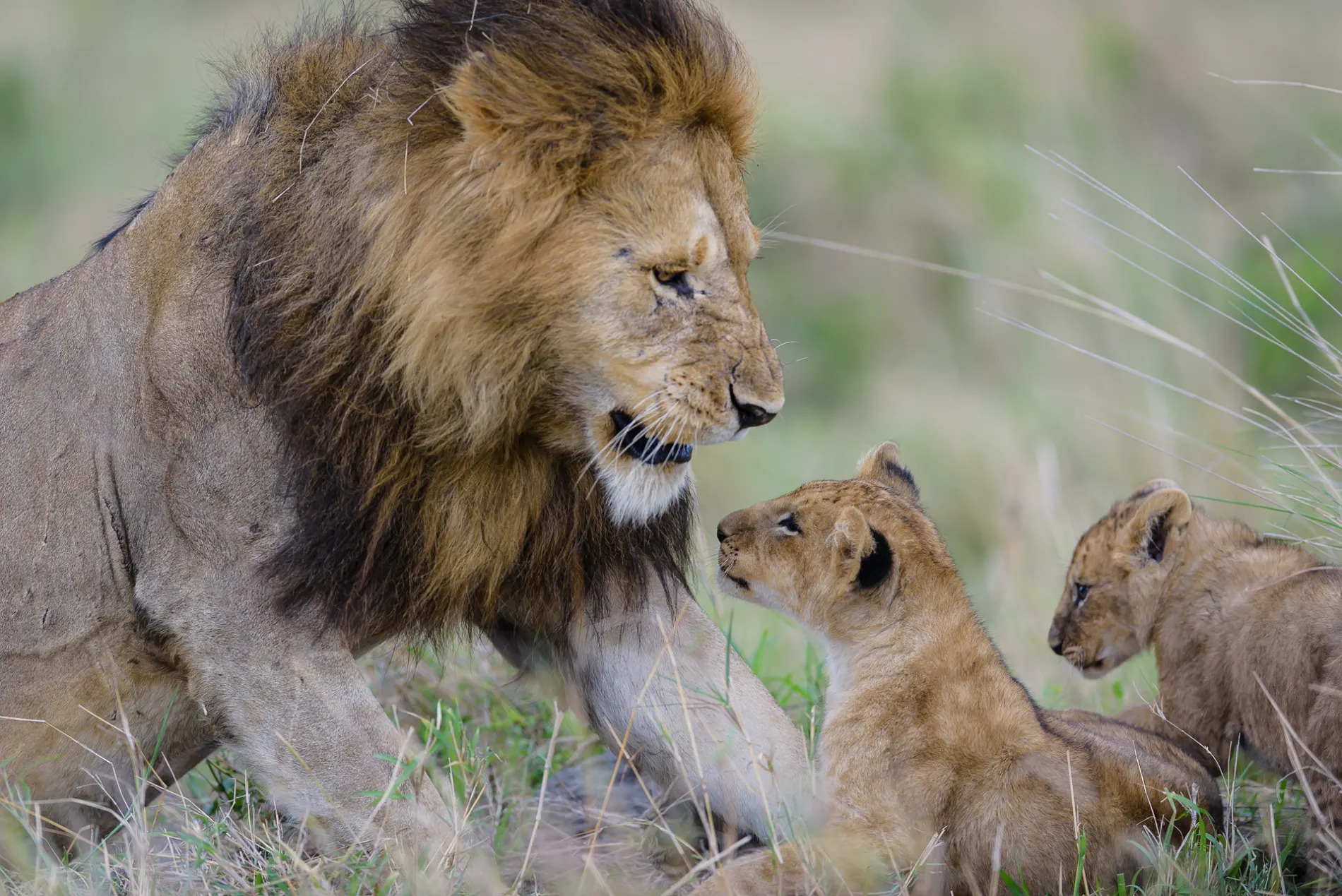
Down in the south the Sausage Tree Pride cubs are getting to know their dad. [Photography by Margot Raggett – 1/500 @f/2.8 ISO 100]
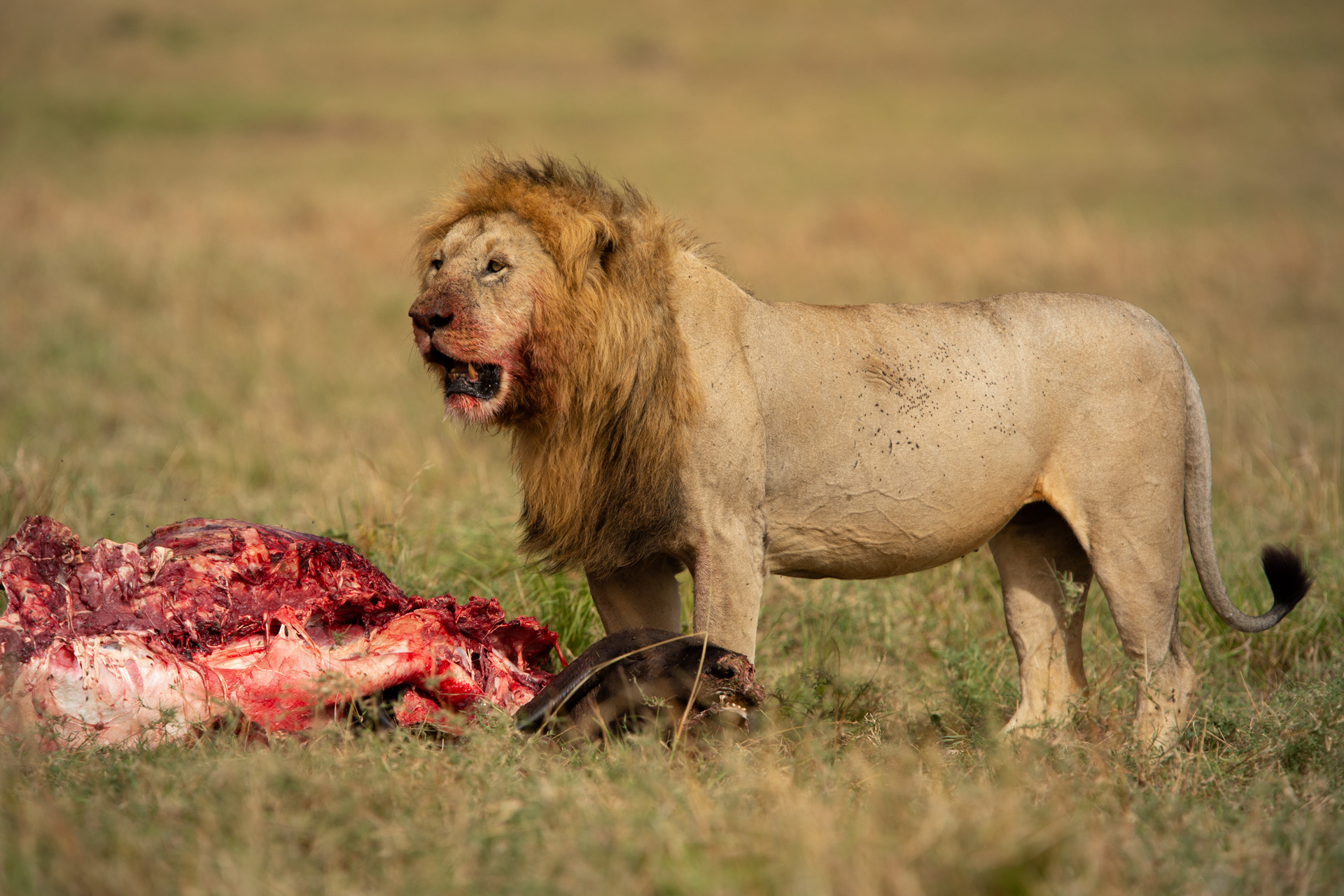
And in the far north of the Triangle, Fang, has been hanging out with the Owino Pride. [f 5.0, 1/3200, ISO 400, -0.33]
But, it wouldn’t be right to showcase a Week At Angama with only photos of lions…
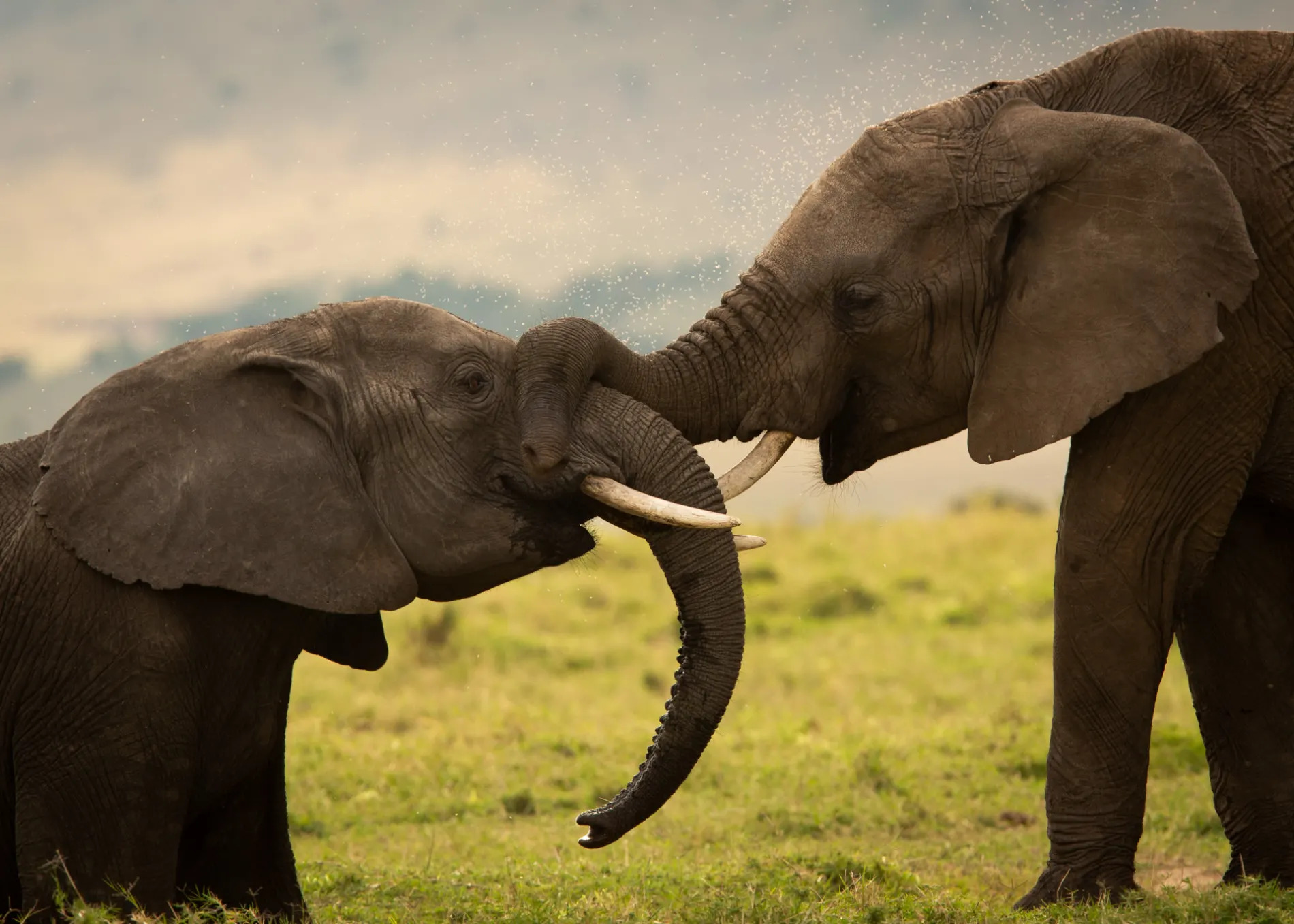
What struck me about this scene of two teenage elephants having a play tussle, was the magnitude of insects swarming around them. [f 4.0, 1/640, ISO 320, +0.67]
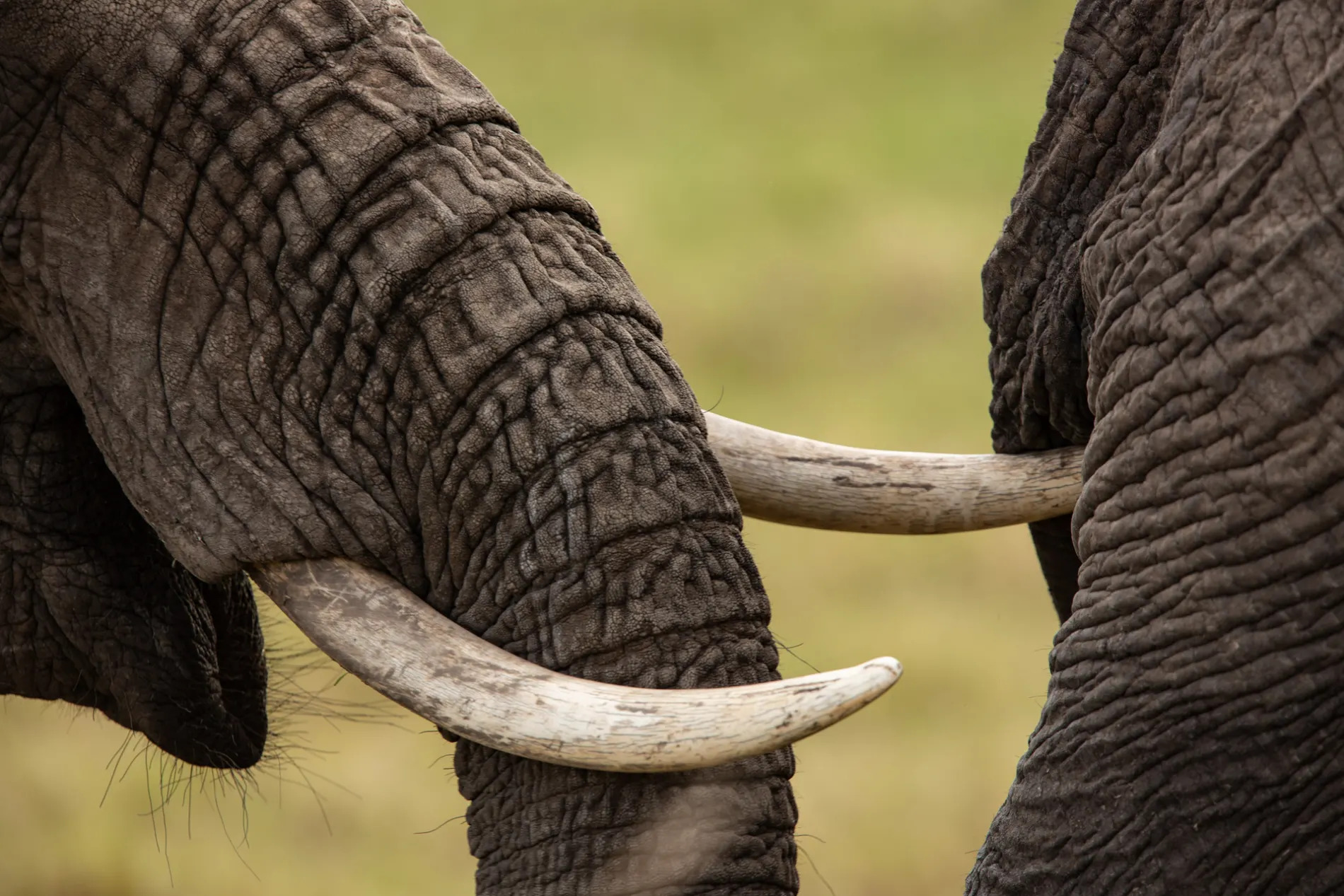
Sometimes I find it useful to zoom in on portions of an animal. I usually do this after I have taken sufficient wider-angle shots of the entire body/animal. By doing this to your subject you will create unique images which are often fun and force the viewer to look twice. It also encourages you to look closely at composition and continually push yourself. [f 5.0, 1/250, ISO 320]

I used the same mindset here, instead deciding to focus on the texture and the hairs on the trunk, leaving the eye blurred in the background.
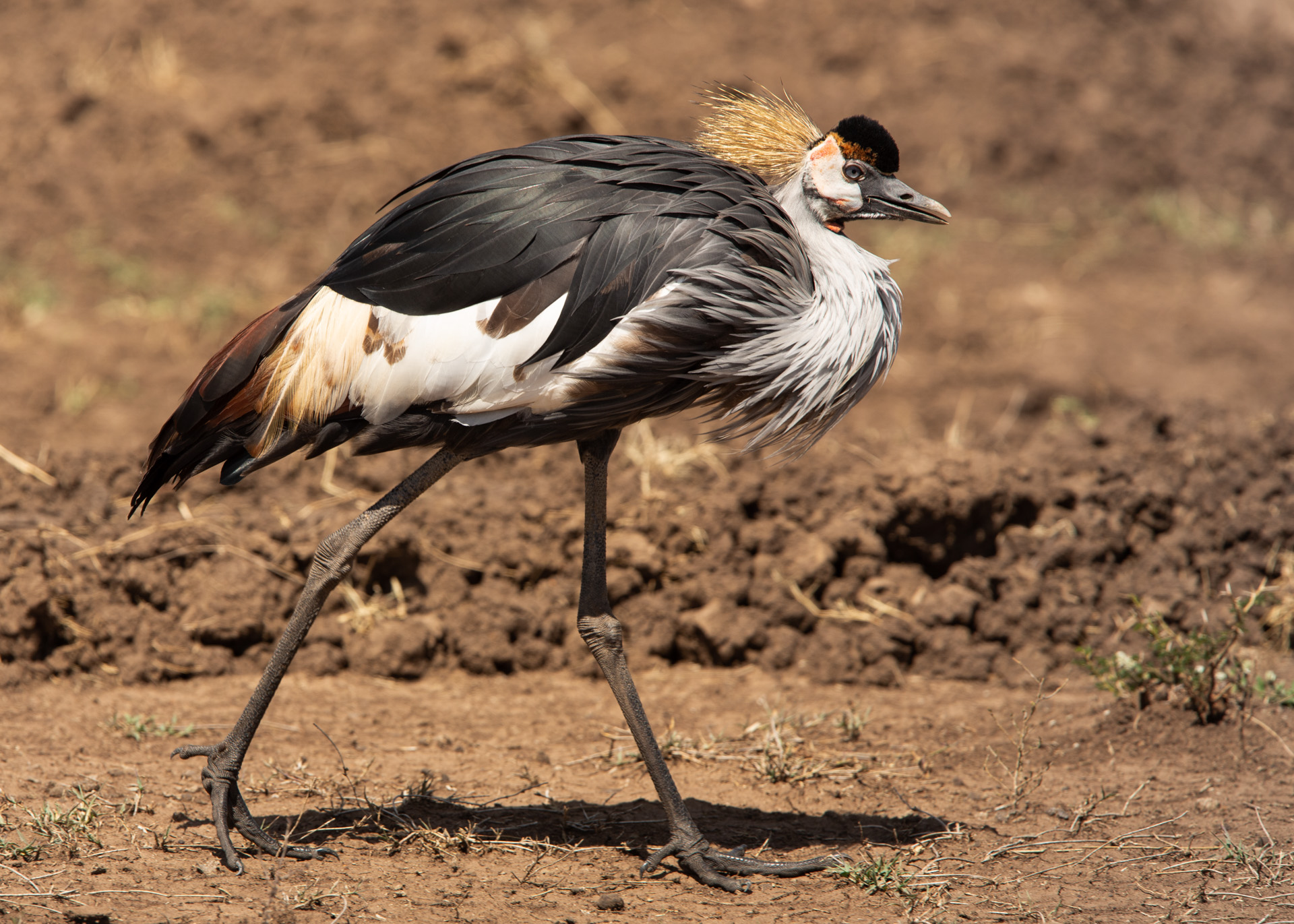
A rather bedraggled and funny looking juvenile Grey Crowned Crane. Still walking around with its parents, this little one has overcome a plethora of hurdles in reaching this size. How beautiful it will be when the crown of stiff golden feathers fully develop. [f 6.3, 1/640, ISO 160, +0.33]

A tender moment between a mother and her new born. The Mara is alive with babies and November is proving one of the most productive months this year. [f 6.3, 1/320, ISO 160]
TAGGED WITH: Wildlife, Maasai Mara, Mara Triangle, Wildlife Photography



COMMENTS (4)
Jennifer Luce
November 30, 2018I love reading these so much!!! I wish I was there!!! One day!!!
REPLYNicky Fitzgerald
December 1, 2018Thanks so much Jennifer … and when you come we will be waiting with arms open wide to welcome you
REPLYMara
December 1, 2018Fang is what everyone else calls the 2nd Kitchwa “Blonde” male. The third Kitchwa male is “Fang” and is not the lion in your pictures above .
REPLYNicky Fitzgerald
December 2, 2018Thank you so much for your comment. Lions in the Mara have numerous names and sometimes it can get rather confusing as the same name is used for different individuals. Nevertheless, we really appreciate you taking the time to help us get a clearer picture on the lions in our beautiful area.
REPLY